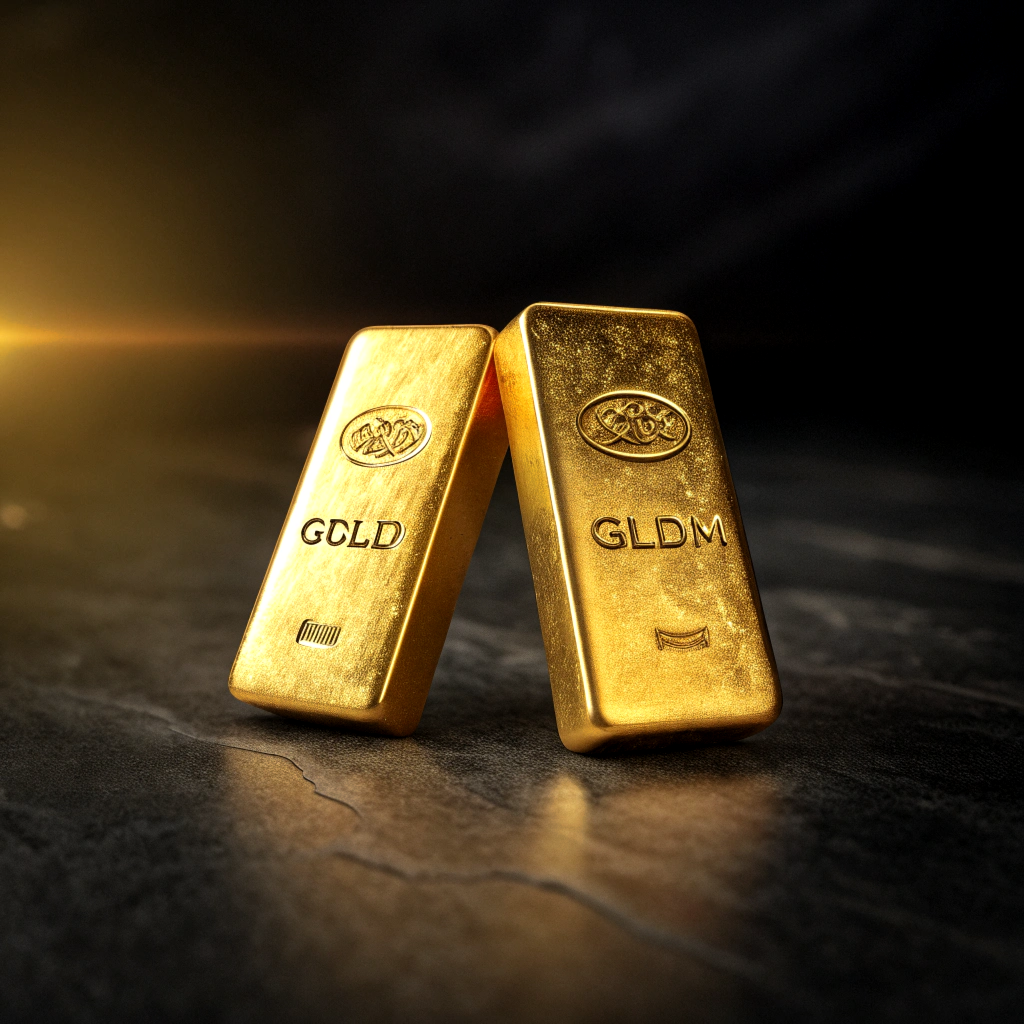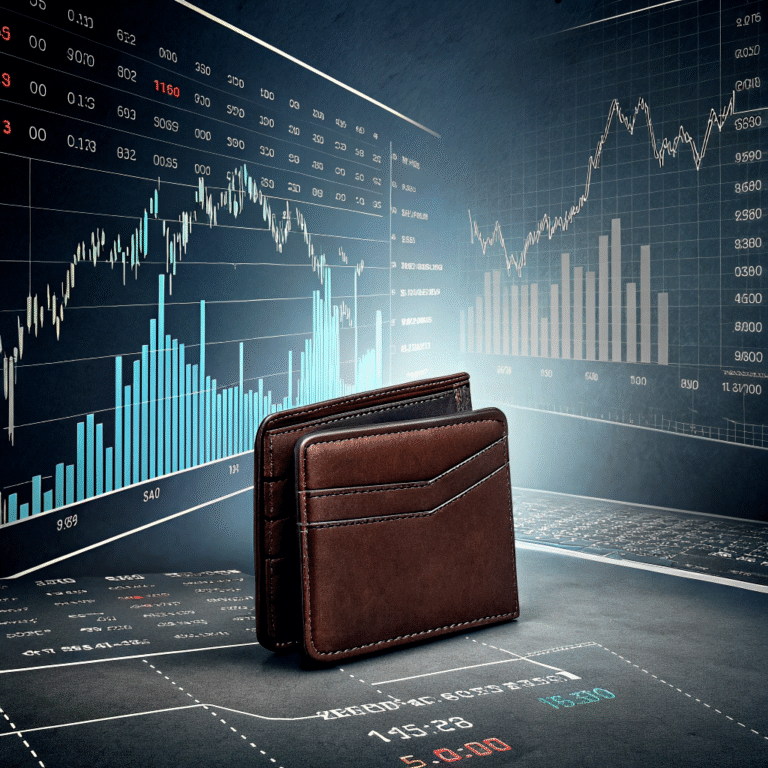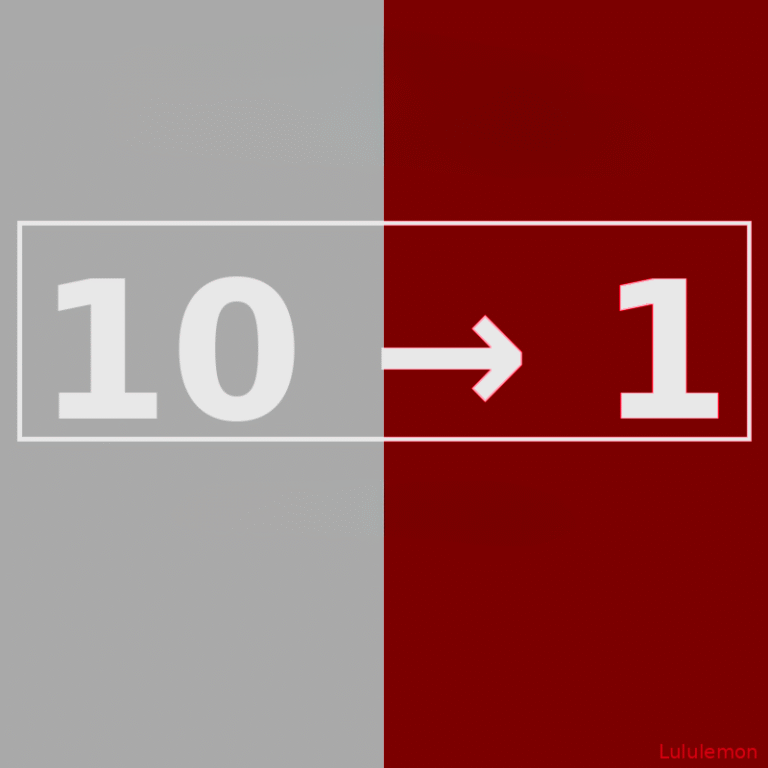Difference Between GLD and GLDM: Choosing Your Ideal Gold ETF

What Are GLD and GLDM?
Both GLD and GLDM are exchange-traded funds (ETFs) designed to track the price of physical gold, but they differ in size, structure and cost. By understanding each product’s design, investors can select the ETF that best aligns with their capital, trading frequency and long-term objectives.

SPDR Gold Shares (GLD) Overview
Launched in 2004 by State Street Global Advisors, GLD was the first and remains the largest gold ETF, with over $70 billion in assets under management (AUM) as of 2025. The fund holds allocated gold bullion stored in vaults—and its shares trade on the NYSE Arca under the ticker GLD. Because of its scale, GLD generally offers the tightest bid–ask spreads and deepest liquidity.
SPDR Gold MiniShares Trust (GLDM) Overview
Introduced in 2020, GLDM is a “mini” version of GLD, also managed by State Street. It holds the same gold per share but at one-tenth the size, making each share cheaper to acquire for small portfolios. With AUM approaching $10 billion, GLDM delivers cost savings and accessibility for retail investors.
Origins and Structure
Understanding each fund’s genesis and legal form helps clarify how they operate and who they suit.
Launch Dates and Issuers
- GLD: Launched November 18, 2004 by State Street Global Advisors.
- GLDM: Launched June 30, 2020 by the same issuer, leveraging lessons from GLD’s scale.
Both funds are structured as grantor trusts under U.S. law, meaning each share represents a fractional, undivided interest in allocated gold bullion held in secure vaults.
Physical vs. Mini Share Classes
| Feature | GLD | GLDM |
| Share Size | 0.1 troy ounce per share | 0.01 troy ounce per share |
| Creation Unit | 100,000 shares | 500,000 shares |
| Target Investor | Institutions, high-net-worth | Retail, smaller accounts |
Key Features & Characteristics
Assessing fees, liquidity and share price helps determine cost efficiency and ease of trade.
Expense Ratios and Fee Structures
- GLD: 0.40% annual fee (40 bps).
- GLDM: 0.18% annual fee (18 bps), over 50% cheaper than GLD.
Fees are deducted daily from the fund’s net asset value (NAV), reducing your underlying gold exposure over time.
Liquidity and Average Daily Volume
| Metric | GLD | GLDM |
| Average Daily Volume | ~10 million | ~2 million |
| Bid–Ask Spread | ~0.02% | ~0.04% |
| Premium/Discount Range | ±0.03% | ±0.05% |
GLD’s scale translates to razor-thin spreads, advantageous for high-frequency trading. GLDM remains adequately liquid for most retail investors.
Share Price, Lot Size, and Accessibility
- GLD: Share price around $180–$200 (reflecting 0.1 oz × spot gold).
- GLDM: Share price near $18–$20 (0.01 oz × spot).
Because GLDM shares cost one-tenth of GLD’s, they lower the barrier for small accounts and dollar-cost averaging strategies.
Performance & Risk Comparison
Although both ETFs track gold, their smaller share size or fee differences can affect returns marginally.
Total Return Over Recent Periods
| Period | GLD Total Return¹ | GLDM Total Return¹ |
| 1 Year | +8.5 % | +8.4 % |
| 3 Years | +25.0 % | +24.7 % |
| 5 Years | +45.2 % | +44.8 % |
¹ Net of expenses, as of March 2025.
Volatility and Drawdowns
Both funds mirror gold’s inherent volatility (annualized ~15 %). During the 2022 drawdown, both declined ~6 % before rebounding — illustrating gold’s role as a diversifier in turbulent markets.
Correlation with Spot Gold
| ETF | Correlation vs Spot Gold² |
| GLD | 0.995 |
| GLDM | 0.994 |
² Calculated using daily returns over five years — virtually indistinguishable tracking of gold’s price.
Practical Considerations for Investors
Beyond fees and performance, other factors influence your choice.
Minimum Investment Requirements
- GLD: Typically 1 share (≈$190).
- GLDM: 1 share (≈$19).
For small portfolios, GLDM enables finer position sizing.
Tax Treatment and Distribution Policies
Both ETFs pay no cash dividends; gains are realized on sale. In the U.S., gains are taxed as collectibles at a maximum of 28 % — consult the IRS gold ETF guidance. Non-U.S. investors should check local tax rules.
Storage, Auditing, and Backing Methodology
Allocated bullion resides in secure vaults (HSBC in London for GLD, JPMorgan for GLDM). Independent auditors confirm holdings monthly. This structure minimizes counterparty risk and ensures 1:1 backing.
Cost Analysis: Fees, Spreads & Tracking Error
Total cost of ownership includes more than just the expense ratio.
Management Fees and Ongoing Expenses
| Fee Component | GLD | GLDM |
| Expense Ratio | 0.40 % | 0.18 % |
| Custody & Administration | Included | Included |
Bid – Ask Spreads in Various Markets
Tight spreads on major exchanges (e.g., NYSE Arca):
- GLD: ~$0.04 per share
- GLDM: ~$0.02 per share
Historical Tracking Difference vs. Gold Spot
Over the past five years, average annual tracking error:
- GLD: 0.10 %
- GLDM: 0.12 %
How to Choose Between GLD and GLDM
Your decision should reflect portfolio size, trading frequency and cost sensitivity.
Matching ETF to Your Investment Horizon
- Long-Term Holder: GLD’s scale and slightly tighter tracking may suit buy-and-hold investors.
- Dollar-Cost Averager: GLDM’s lower share price eases systematic investing.
Balancing Cost Sensitivity with Liquidity Needs
If you trade frequently or in large sizes, GLD’s narrower spreads can offset its higher fee. Smaller accounts often benefit more from GLDM’s low expense ratio.
Suitability for Small vs. Large Portfolios
| Portfolio Size | Preferred ETF |
| <$10,000 | GLDM |
| >$100,000 | GLD |
| $10,000–$100,000 | Both (blend) |
Where and How to Trade GLD and GLDM
Access and mechanics vary by platform.
Major Brokerage Platforms (NYSE, OTC Markets)
Both ETFs trade on NYSE Arca; some brokers also offer OTC execution. Popular platforms include Fidelity, Schwab and Interactive Brokers.
Trading Hours and Order Types
- Primary Session: 9:30 am–4:00 pm ET.
- Extended Trading: Pre-market and after-hours sessions with wider spreads.
- Order Types: Market, limit, stop, and bracket orders.
CFD and Margin Trading Options
For leverage seekers, many CFD brokers (e.g., IG, Saxo) provide gold ETF CFDs — remember to factor in overnight financing and margin requirements.
Frequently Asked Questions (FAQ)
Which ETF Has Lower Fees: GLD or GLDM?
GLDM charges 0.18 % vs. GLD’s 0.40 %, making it more cost-effective for long-term holdings.
Can GLDM Be Used to Hedge Inflation?
Yes — both ETFs track gold, historically a reliable inflation hedge.
How Do Tax Treatments Differ Between GLD and GLDM?
Both are taxed as collectibles at up to 28 % in the U.S.; non-U.S. investors should consult local regulations.
What Is the Minimum Lot Size for Each ETF?
GLD: 1 share; GLDM: 1 share. Fractional-share investing is available at some brokers.
Are There Other Gold ETF Alternatives to Consider?
- iShares Gold Trust (IAU): Lower fee (0.25 %) and smaller share size.
- Aberdeen Standard Physical Gold Shares ETF (SGOL): Swiss vaulting option.
The Takeaway: Selecting Your Optimal Gold ETF
Both GLD and GLDM faithfully track physical gold, offering inflation protection and portfolio diversification. GLD’s scale suits large or active traders, while GLDM’s low cost and smaller share size favor retail investors and systematic buyers.
Next Steps for Your Portfolio Allocation
- Review Your Objectives: Determine whether you prioritize cost savings or ultra-tight spreads.
- Compare Holders: Check current AUM, bid–ask spreads and real-time NAV on the fund websites.
- Execute Your Plan: Use a reputable broker, set limit orders to manage entry price, and integrate gold exposure into your broader asset mix.
By aligning ETF choice with your investing style and capital base, you’ll harness gold’s defensive qualities while controlling costs and execution quality.




